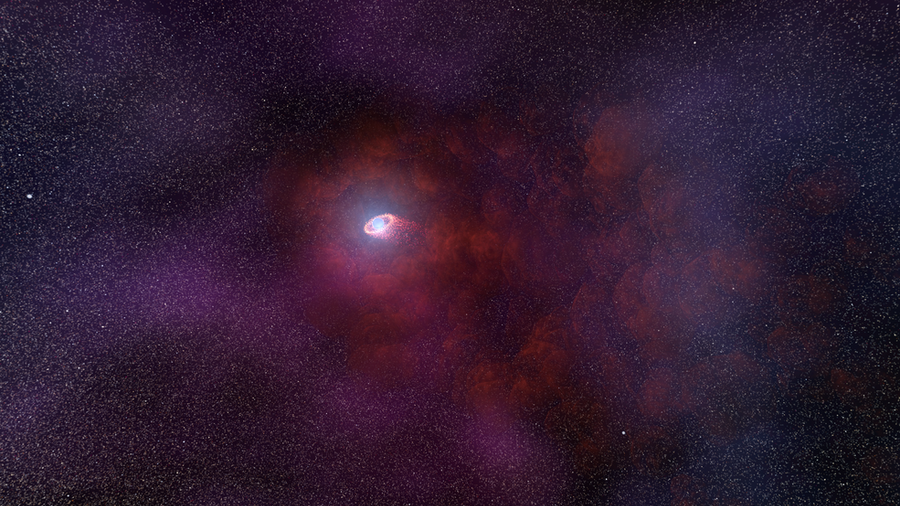Hubble detects never-before-seen features around neutron star

NASA’s Hubble space telescope has detected an unusual infrared light emission from a nearby neutron star, indicating never-before-seen features around the celestial object.
This is the first neutron star in which an extended signal has been seen only in infrared light. The remarkable discovery was made by a team of international researchers who have offered two possible explanations for the extended infrared signal - a dusty disk or an energetic wind known as a pulsar wind.
Scientists observed an extended area of infrared emissions around this particular neutron star, which belongs to a group of seven nearby X-ray pulsars — nicknamed ‘the Magnificent Seven.’
The Hubble Space Telescope has detected for the first time infrared radiation from a nearby neutron star. This might be from dust in an 18 billion-mile-wide circumstellar disk, or shocks from a wind of subatomic particles blasted off the stellar corpse. https://t.co/tGZs8LS7fRpic.twitter.com/lkwvbU9T5w
— HubbleTelescope (@HubbleTelescope) September 17, 2018
Lead author of the study Bettina Posselt said one possible explanation is that there is a disk of material - most likely dust - surrounding the pulsar.
“Such a disk would be composed of matter from the progenitor massive star. Its subsequent interaction with the neutron star could have heated the pulsar and slowed its rotation,” Posselt said.
This phenomenon is known as supernova fallback disk, and if confirmed as the source of the signal it could change our general understanding of neutron star evolution, according to Posselt.
READ MORE: ‘Nuclear pasta' could be strongest material in the universe – study
Another theory is that the emission was caused by a pulsar wind slamming into the neutron star as it sped through interstellar space. The shocked particles would then emit synchrotron radiation, causing the extended infrared signal that we see.
“Typically, pulsar wind nebulae are seen in X-rays and an infrared-only pulsar wind nebula would be very unusual and exciting,” Posselt said.
Neutron stars are incredibly dense remnants of massive stars after a supernova explosion. They are generally studied in radio and high-energy emissions. This research, published in the Astrophysical Journal, suggests that a greater understanding of neutron star evolution could be gained by studying them in infrared light.
If you like this story, share it with a friend!















